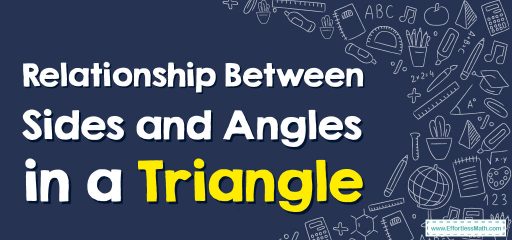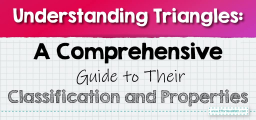Relationship Between Sides and Angles in a Triangle

A step-by-step guide to finding the relationship between sides and angles in a triangle
Relationship Between Sides and Angles in a Triangle – Example 1
Relationship Between Sides and Angles in a Triangle – Example 2
Find the smallest angle of the triangle.
Solution:
Since \(14<14.5<15\), (MO) ̅\(<\)(ON) ̅\(<\)(MN) ̅, their opposite angles are in the same order, from smallest to largest: \(∡O<∡N<∡M\)
So, \(∡O\) is the smallest angle
Related to This Article
More math articles
- 10 Most Common 4th Grade OST Math Questions
- How to Interpret STAAR Scores?
- A Comprehensive Guide to Learning How to Add Three or More Fractions with Unlike Denominators
- The Math Behind Horse Racing Strategies: Odds & Probabilities
- Top 10 PERT Math Prep Books (Our 2023 Favorite Picks)
- Algebra Puzzle – Challenge 41
- Zeroing In: The Art of How to Divide Numbers Ending with a Zero
- Geometry Puzzle – Challenge 69
- What is the Side Splitter Theorem? A Complete Introduction and Exploration
- How to Apply a Mathematical Approach to Essay Writing


























What people say about "Relationship Between Sides and Angles in a Triangle - Effortless Math: We Help Students Learn to LOVE Mathematics"?
No one replied yet.